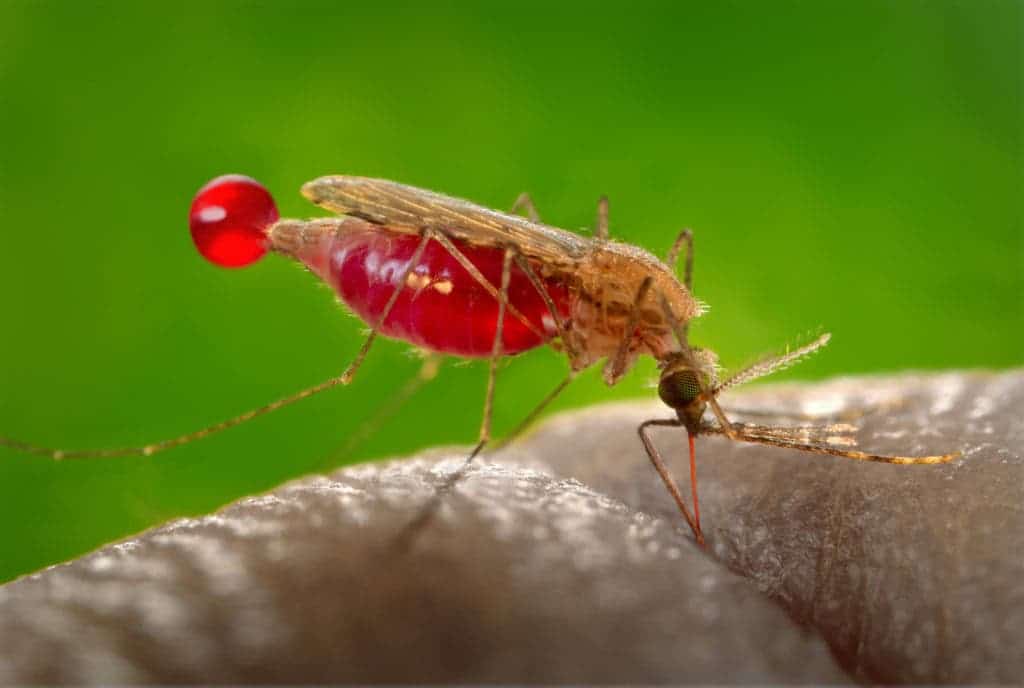Scientists used the CRISPR/Cas9 gene editing technique to deactivate a gene in order to make mosquitoes less likely to get infected by parasites that cause malaria in humans.
Only certain species of mosquitoes of the Anopheles genus — and only females of those species — can transmit malaria. Malaria is caused by a one-celled parasite called a Plasmodium, which undergoes a series of infection steps before arriving at the mosquito’s salivary gland, from which it ultimately spreads to bitten humans.
The infection cycle depends on several mosquito proteins, some of which researchers at Johns Hopkins University are trying to hack in order to block the spread of malaria. One of these proteins is fibrinogen-related protein 1 (FREP1). While some groups are trying to target the protein with a vaccine, the team led by George Dimopoulos took a radically different approach and used the CRISPR/Cas9 technique to inactivate the FREP1 gene in the Anopheles gambiae mosquito.
Taking the buzz off malaria
CRISPR stands for Clustered Regularly Interspaced Short Palindromic Repeats. Gene editing with CRISPR-Cas9 is still in its infancy despite its widespread use among the world’s foremost research institutes. It was only a couple of years ago that scientists discovered that the foodborne pathogen Campylobacter jejuni has an ingenious immune system that recognizes and deletes foreign genomic material from invading viruses, protecting the bacteria’s genetic integrity.
The bacteria’s immune system performs this feat with the help of guide-RNA, which leads the Cas9 protein to the site of foreign viral material. Once there, Cas9 targets and cuts the DNA. The guide-RNA and Cas9 can be pictured as a hand and scissors. Using artificial guides, scientists have been able to modify specific genes not only in bacteria, but also in plants and animals. There are already thousands of peer-reviewed papers focusing on CRISPR technology.
The John Hopkins researchers found that FREP1 inactivation resulted in far fewer infections of mosquitoes with both human and rodent Plasmodium parasites.
“It was interesting to see that the FREP1 knockout was still able to support infection with a few malaria parasites, suggesting that alternative invasion routes may exist,” Dimopoulos said.
But even so, the study shows that it’s possible to suppress mosquito susceptibility to malaria parasites to such a degree that infections could be significantly curbed at the population level, the authors reported in PLOS Pathogens. Other mainstream gene editing approaches to suppressing malaria infections involve engineering sterile female mosquitoes, which could completely wipe out mosquito populations.
“Whether it would be possible to completely wipeout a mosquito population or species with mosquitoes that aren’t able to reproduce is still questionable and would certainly be logistically and economically challenging. If only a partial and temporary population suppression is achieved then that intervention is not long lasting. A population replacement strategy using parasite refractory mosquitoes may represent a long-lasting transmission blocking strategy,” Dimopoulos told ZME Science.
Whatever strategy we might employ at the end of the day, it’s encouraging to learn that our arsenal against malaria is growing. Every year, half a million people die from malaria.
The problem with FREP1 inactivation, however, is that this also comes at a fitness cost. The engineered mosquitoes had a reduced blood-feeding ability, lower fertility, and a lower egg hatching rate. As such, these mutated mosquitoes likely wouldn’t be able to complete with non-mutants in the wild. This is why the researchers are looking for “ways to engineer mosquitoes with optimal anti-Plasmodium effects at a minimal fitness cost, and then look at ways to spread the resistance trait,” Dimopoulos told me in an email.
“The use of GM mosquitoes may represent one of the most eco-friendly and harmless long-lasting approaches,” he concluded.










